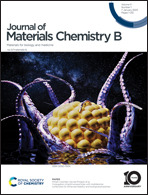New aspects of lipopeptide-incorporated nanoparticle synthesis and recent advancements in biomedical and environmental sciences: a review
Abstract
The toxicity of metal nanoparticles has introduced promising research in the current scenario since an enormous number of people have been potentially facing this problem in the world. The extensive attention on green nanoparticle synthesis has been focussed on as a vital step in bio-nanotechnology to improve biocompatibility, biodegradability, eco-friendliness, and huge potential utilization in various environmental and clinical assessments. Inherent influence on the study of green nanoparticles plays a key role to synthesize the controlled and surface-influenced molecule by altering the physical, chemical, and biological assets with the provision of various precursors, templating/co-templating agents, and supporting solvents. However, in this article, the dominant characteristics of several kinds of lipopeptide biosurfactants are discussed to execute a critical study of factors affecting synthesis procedure and applications. The recent approaches of metal, metal oxide, and composite nanomaterial synthesis have been deliberated as well as the elucidation of the reaction mechanism. Furthermore, this approach shows remarkable boosts in the production of nanoparticles with the very less employed harsh and hazardous processes as compared to chemical or physical method-based nanoparticle synthesis. This study also shows that the advances in strain selection for green nanoparticle production could be a worthwhile and strong economical approach in futuristic medical science research.

- This article is part of the themed collection: Journal of Materials Chemistry B Recent Review Articles


 Please wait while we load your content...
Please wait while we load your content...